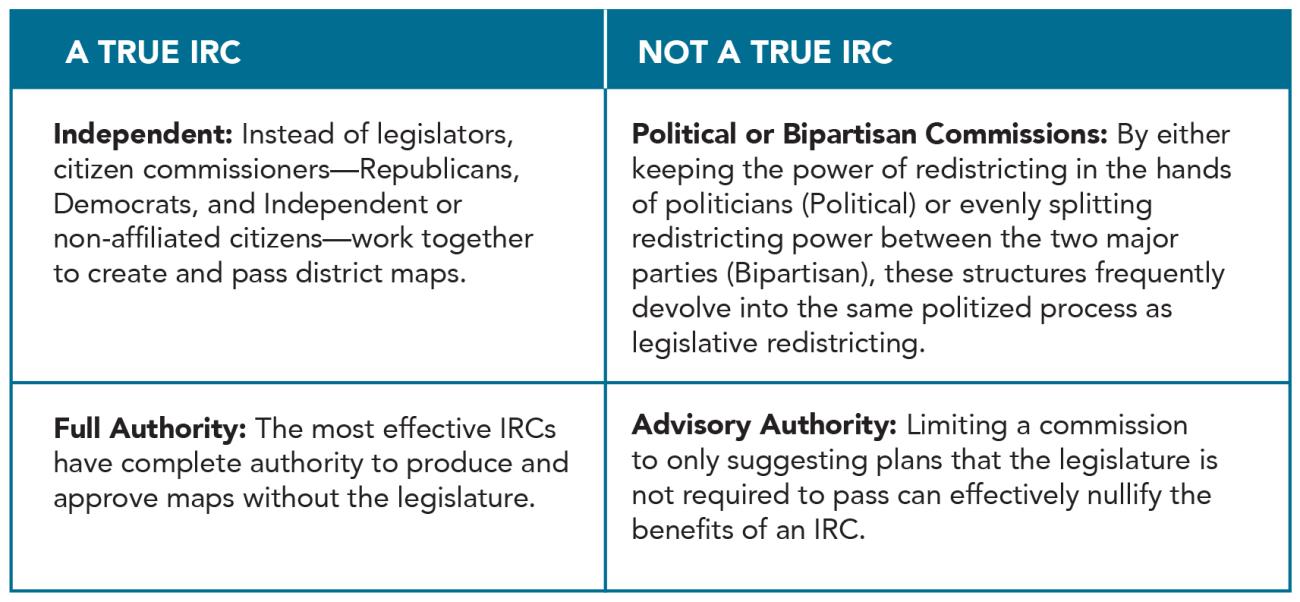Voters should choose their politicians, not the other way around. Redistricting commissions — when done right — are a crucial, voter-centric reform designed to make the redistricting process transparent and impartial.
In 2021, 22 states utilized redistricting commissions to draw state legislative or congressional maps, directly impacting political representation for over 80 million voters — nearly 50% of all registered American voters.
But not all redistricting commissions are made equal. It is essential that lawmakers, experts, activists, and citizens learn from the lessons of 2021 in preparation for our nation’s next major cycle of redistricting in 2031.
Campaign Legal Center (CLC) recently published a landmark report highlighting key elements of effective redistricting commissions, including how they should be structured, equipped, and administered to achieve fair representation.
Click Here for a Two-Page Summary of the Report
Key Takeaways:
Through case studies that analyze redistricting commissions in different states and with different structures, the report outlines several features that make redistricting commissions successful. Redistricting commissions should be:
- Truly independent and insulated from legislative and other political influence.
- Vested with the full authority of redistricting.
- Made up entirely of citizen commissioners who are broadly representative of the diversity of their state.
- Evenly split between the primary political party, secondary political party, and Independents.
- Large enough to disperse responsibilities, encourage collaboration and compromise, and prevent one or two outlier commissioners from derailing the process.
- Made up of commissioners empowered to understand and make decisions regarding the complexities of redistricting.
- Assisted by trustworthy and knowledgeable staff and advisors, selected through a process designed to give commissions a broad base of options.
- Guided by clearly defined and ranked criteria protective of the rights of every voter.
- Making decisions and drawing maps with processes aimed toward building consensus as opposed to rewarding contention.
- Redistricting through a participatory, inclusive, and transparent process.
- Required to demonstrate how the final maps incorporate public input.
- Ensuring the enactment of fair maps through a clear, specific fallback mechanism.
As the chart below underscores, not all redistricting commissions are equally effective. Voters and advocates should be empowered to look beyond the term “commission” and seek out redistricting commissions that help deliver fair representation, versus those that reinforce the pitfalls of traditional legislative redistricting.

You can learn more by reading the full report, linked here: “Redistricting Commissions in the 2021 Redistricting Cycle: Case Studies and Lessons Learned for 2031 and Beyond.”
Read more here.
